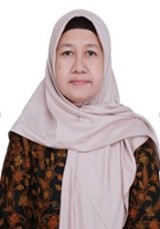Validasi Metode Spektrofotometri UV Untuk Penetapan Kadar Kolkisin Dalam Infus Kembang Sungsang
Downloads
Validation of colchicine analysis methods in herbal infusions has been carried out to facilitate quality control of raw materials or simplicia. The validation parameters of the method set include selectivity, linearity, precision, and accuracy, which are included in category I. In this study, the raw material was prepared from the leaves of Gloriosa superba Linn. infusion made. The results of the selectivity test with colchicine as a standard provide uptake at a chosen wavelength of 340.2 nm. Linearity test results show the equation y = 0.0303x + 0.0131 with r = 0.9998> r Table for n = 6, ie 0.917 for p <0.01 and 0.811 for p = <0.05, the value of Vxo is 1 15%. In the precision test, the coefficient of variation is 0.54% and the accuracy test gives an average recovery of 92.81% ± 4.16%. Determination of colchicine in the infusion preparation was carried out as many as three replications. The results showed that the content of colchicine in raw materials was 0.3152% ± 1.99%, while the colchicine content in herbal infusion preparations was 0.483 ± 4.47%.
Abernethy, Darrell R., Braden, Larry L., Brater, D. Craig., Mars, Susan S de., Mauger, John W., William, Roger L., Hickey, Anthony J., Peter, Ganz., Tente, William., Yeoman, L., Garfinkle, Barry D., Foster, Thomas S., Allen, Loyd V., Shefter, Eli, and Popin, William F.,2007.The United States Pharmacopeia 30 The National Formulary 25. . Rockville : The United State Pharmacopeial Convention, Inc. p.1826
Arambewela, Lakshmi S.R, Kumundini and Ratunga, J.1991. Studies an Gloriosa superba Grown in Sri Lanka. Ceylon Institute of Scientific and Individual Research. p.178.
Australian Pesticides & Veterinary Medicines Authority (APVMA). 2004. Guidelines For The Validation of Analytical Methods for Active Constituent, Agricultural and Veterinary Chemical Products. http://www.apvma.gov.au
British Standard.2002. Method for Preparation of a liquor of tea for use in sensory tests. London: British Standards Institution. p.1
Cocco, Giuseppe, Chu, David C.C., and Pandolfi, Stefano,2010. Colchicine in clinical medicine. A guide for internists. European Journal of Internal Medicine. p.503-504.
Departemen Kesehatan. 1995. Farmakope Indonesia IV. Jakarta: Departemen Kesehatan Republik Indonesia.
Dewoto, Hedi R. 2007. Pengembangan Obat Tradisional Indonesia Menjadi Fitofarmaka. Majalah Kedokteran Indonesia. Vol.57, No.7, p.205-206.
Gandjar, Ibnu Gholib., dan Rohman, Abdul, 2010. Kimia Farmasi Analisis. Yogyakarta: Pustaka Pelajar. Hal 234-262.
International Conference on Harmonisation of Technical Requirements for Registration of Pharmaceutical for Human use. 2005. ICH Harmonised Tripartite Guideline Validation of Analytical Procedures: Text and Methodology Q2 (R1). ICH.
Isnawati, A., dan Arifin, K.M., 2006. Karakteristik Daun Kembang Sungsang (Gloriosa superba) dari aspek fisiko kimia. Media Litbang Kesehatan, XVI nomor 4, Hal. 8 – 14.
Jain, A.P., and Suryavanshi, S., 2010. Gloriosa superba Linn – a pharmacological review. IJPRD/PUB/ARTI/VOV-2/ISSUE-8/OCT/004, p. 24 – 28.
Jana, S., and Shekhawat, G.S., 2011. Critical review on medicinally potent plant species: Gloriosa superba. Fitoterapia 82, p. 293–301.
KBBI online. 2013. Pengertian Seduh. Diakses dari kbbi.web.id/seduh-2, pada tanggal 20 September 2013.
Mulja, M. dan Syahrani, A.1989. Aplikasi Analisis Spektrofotometri UV-Vis. Surabaya: Mephiso Grafika.
Mulja, M., dan Suharman. 1995. Analisis Instrumental. Surabaya : Airlangga University Press.
Narayana, B., Divya, N S. 2010. A New Method for Spectrophotometric Determination of Cholchicoside. Journal of Scientific & Industrial Research. Vol. 69. p.368.
Patial, A., and Verma, P., 2012. Development of UV Spectrophotometric method for estimation of cholcicine in phosphate buffer saline pH 6,4. IRJP, 3 (2), p. 87 – 89.
Pawar, B.M., Wayhal, V.P., Pawar, N.D., Agarwal, M.R., Shinde, P.B., Kamble, H.V., 2010. Anthelmintic activity of Gloriosa superba Linn (Liliaceae). International Journal of Pharm Tech Research CODEN (USA): IJPRIF ISSN: 0974-4304 Vol.2 No.2, p.1483-1487.
Pereira, G.E, Gaudillere, J., Leeuwen, C., Hilbert, G., Maucourt, M, Deborde, C., Woing, A., Rolin, D. 2006. H-NMR metabolic profiling of wines from three cultivars, three soil types and two contrasting vintages. Congres International des terroirs viticoles 2006-Vith International teiroir congress 2006.
Rajagopal, C and Kandhasamy, R., 2009. Genetic variability of kazhappai kizhangu (Gloriosa superba L.) in Tamil Nadu assesed using morphological and biochemical traits. Tropical Agriculture 47 (1-2), p. 77-79.
Rowe, R.C., Sheskey, P.J., Quinn, M.E. 2009. Handbook of Pharmaceutical Excipient sixth edition. London: Pharmacutical Press.
Putro Agus Harnowo. Baru 1% Jenis Tanaman di Indonesia yang Termanfaatkan. Diakses dari http://health.detik.com/ read/2012/06/ 12/143207/1939225 /763/baru-1-jenis-tanaman-di-indonesia-yang-termanfaatkan?utm source= topshare
Syarif, Amir, dan Ascobat, Purwantyastuti.,dkk.2007. Farmakologi dan Terapi Edisi 5.Jakarta: Departemen Farmakologi Setiorini, Santi, dan Handoyo. 2010. Analisa Kadar Klorida Pada Kantong Seduhan Herbal Serta Pengaruhnya Terhadap Mutu Teh.Surabaya: Prodi Kesehatan Lingkungan Madiun Jurusan Kesehatan Lingkungan Politeknik Kesehatan Departemen Kesehatan. Hal.165.
Steenis,van Dr C.G.G.J.1997.FLORA Untuk Sekolah di Indonesia. Jakarta : PT Pradnya Paramita.
Sweetman, S.C., 2009. Martindale. The Complete Drug Reference. Thirty-sixth edition. London: Pharmaceutical Press.
The United State Pharmacopeial Convention. 2009. The United State Pharmacopeia Ed National Formulary 27, Rockville: The United State Pharmacopeial Convention, p. 733.
Watson, D.G., 2005. Analisis Farmasi Buku Ajar untuk Mahasiswa Farmasi dan Praktisi Kimia Farmasi, edisi 2. Diterjemahkan oleh Syarief, W. R. Jakarta: Penerbit Buku Kedokteran. dan Terapeutik Fakultas Kedokteran Universitas Indonesia. Hal 243
Yuwono, Mochammad and Gunawan Indrayanto.2009. Validation of Chromatographic Method of Analysis. Elsevier Inc. Vol. 32. p.251.
BIKF by Unair is licensed under a Creative Commons Attribution-ShareAlike 4.0 International License.
1. The journal allows the author to hold the copyright of the article without restrictions.
2. The journal allows the author(s) to retain publishing rights without restrictions
3. The legal formal aspect of journal publication accessibility refers to Creative Commons Attribution Share-Alike (CC BY-SA).
4. The Creative Commons Attribution Share-Alike (CC BY-SA) license allows re-distribution and re-use of a licensed work on the conditions that the creator is appropriately credited and that any derivative work is made available under "the same, similar or a compatible license”. Other than the conditions mentioned above, the editorial board is not responsible for copyright violation.























